It’s been cold here in Vermont. In the past month or so we’ve had only a couple days above freezing. I’m watching our wood pile disappear so quickly that I wonder if someone isn’t nicking logs in the middle of night. It might be the raccoon. Or the possum. Or the small red fox with legs that look like she’s wearing black socks. Or it might be that cold air is dumping out of the north pole at a record rate as the ice breaks for the first time in 7,000 years. To combat the chill and also ease my mind as we navigate a turbulent start to the year, last weekend I looked for a mini project. Something pretty. Something delicious.
A couple years ago I started playing with blue pea flowers (the dried blue blossom of the Butterfly Pea plant) as a natural colorant in my baking. I’d used natural or plant-based colors before (turmeric, paprika, spinach powder, rose petals, charcoal, etc.) but had never made anything blue. I started with puff pastry, then quickly moved over to leavened breads, steeping the flowers in the water for the dough. Lured by the effects produced by marbling, stacking, or spiraling two colors together, I now usually mix a white dough and a blue dough, then combine them.
For the base formula here I’m using the simple pain de mie from my book. It’s buttery, easy to work with, and can be scored beautifully right after shaping, adding a nice outward visual to compliment the beauty of the crumb. To make the blue portion I steep the pea flowers in boiling water then strain before adding to the dough. The pea flower water adds little to no flavor—I’m using it purely for the color.
A couple notes about the process. First, I’m not using a preferment. I wanted to make this in an afternoon with no planning. If you’d like a preferment (I heartily endorse this, I love pain de mie with 50% prefermented flour in a stiff, yeasted preferment), some math will be required. Comment below if you’d like more information on a preferment version. As an alternative to the preferment (and the math), after the first rise you can refrigerate the dough overnight. The final rise after shaping will take twice as long but the flavor is improved with the overnight rest. If you go that route, on day two, allow it to warm some then pick up the recipe at the rolling stage.
Blue blossom pain de mie
Warm the milk (I use the microwave in 20 second bursts until it’s warm, 90°F or so in my 62°F house), and soften the butter. Once those things are in process I take two medium mixing bowls of roughly the same size and scale each dough into its own vessel. First, steep the flowers in boiling water.
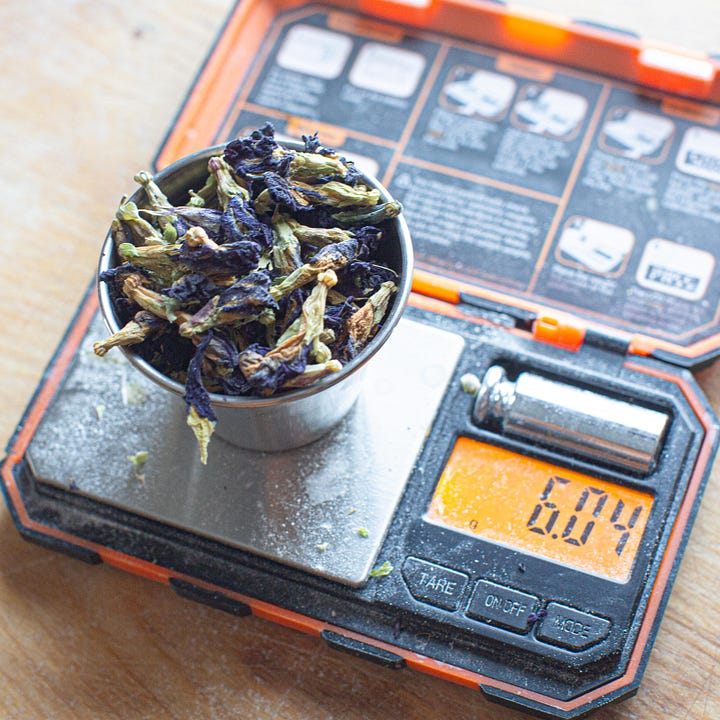
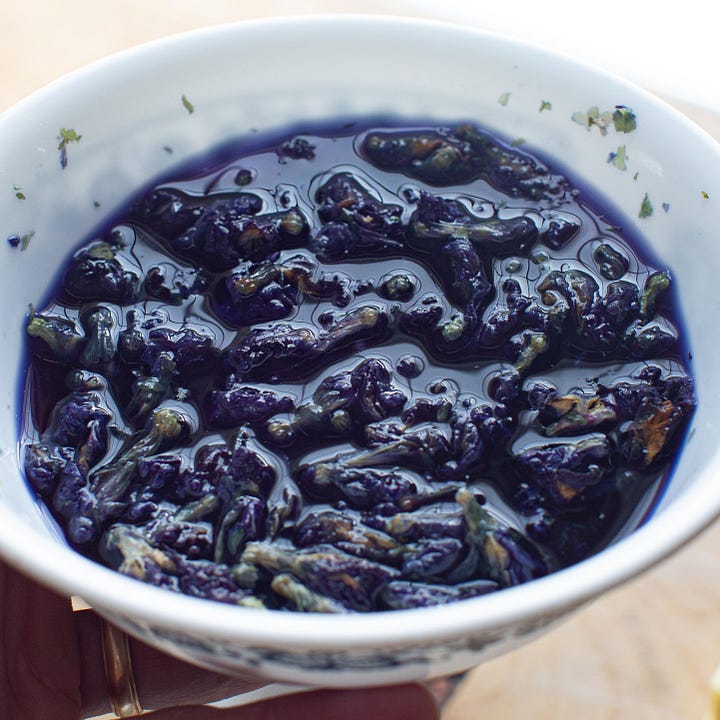
Water, boiling, 100g
Blue pea flowers*, 5g
*For the brand of flowers that I have, this is a good quantity. If your bread doesn’t have the color you want (very hard to know in advance), you can increase the quantity of flowers or extend the steep.
Pour the boiling water over the pea blossoms and let them steep for at least 10 minutes. While the flowers steep, prepare the ingredients (enough for to mix both doughs, amounts are below). So, warm the milk, soften the butter, and scale your dry ingredients for each mix (again, remember that you’re making two doughs here, one white, one blue).
White dough*
All-purpose flour, 229g
Salt, fine, 5g
Yeast, instant, 5g
Water, warm, 83g
Milk, warm, 46g
Butter, unsalted, soft, 34g
Honey, 11g
Blue dough*
All-purpose flour, 11.7%, 229g
Salt, fine, 5g
Yeast, instant, 5g
Blue pea water, warm, 83g (Strain the steeping liquid, pressing to remove the required quantity of water. If you are short, add warm water to make up the difference and add more steeping water in subsequent batches.)
Milk, warm, 46g
Butter, unsalted, soft, 34g
Honey, 11g
*One process note, I like to mix these doughs roughly simultaneously. I scale the dry into their own separate bowls, then add the remaining ingredients, working them in succession. One additional tip, if you get your hands or tools in, work the white dough first. A white implement is ok to go into the blue but blue will show up in your white, trust me.
Stir the dry ingredients to combine then add the warm milk, water (or steeping liquid), honey, and butter to each dough. Stir briefly to combine then knead in the bowl for a minute or so, until combined but not smooth. The mixture will be rough with a ragged surface that looks like cottage cheese curds. Take the dough temperature—75°F to 82°F is a good range. Cover with a bowl cover, plastic bag, or cling film, and set a 20 minute timer.

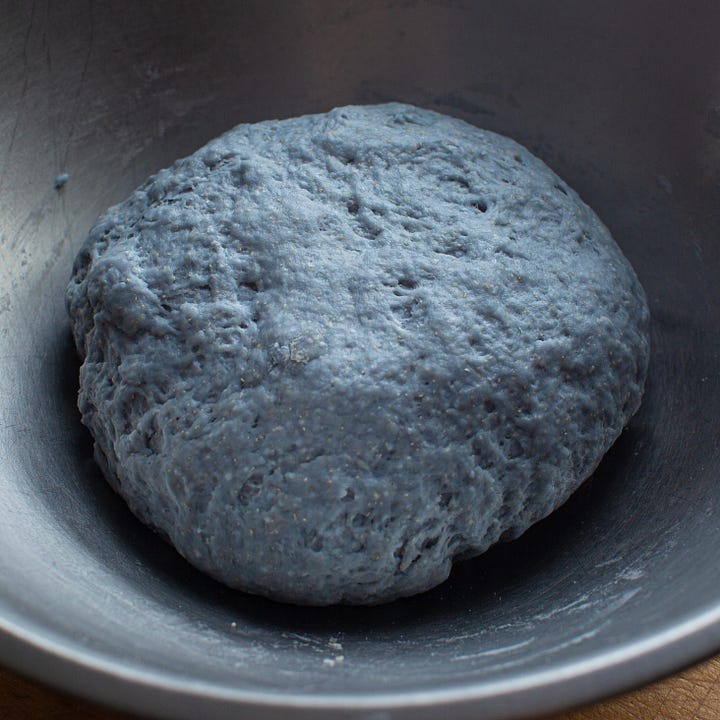
After the rest, knead each dough briefly on an unfloured surface (the stiff, enriched dough shouldn’t require any flour) until smooth. When the dough is fully homogenous, tensioned, and smooth, stop and return to the bowl. The kneading may be as quick as one minute.
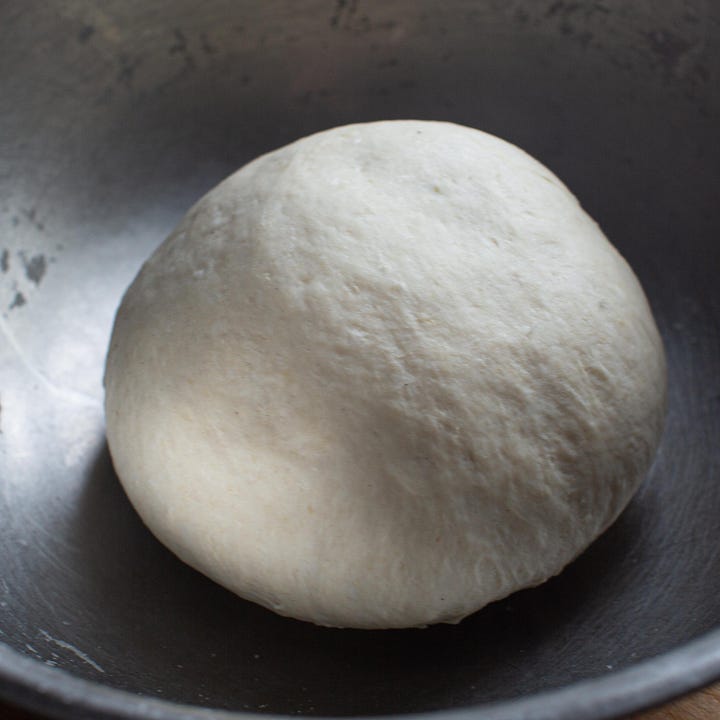
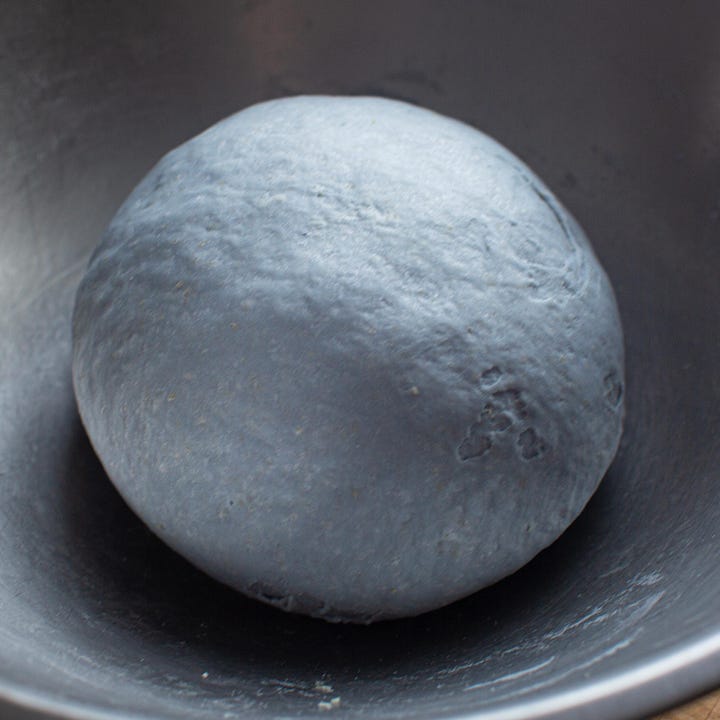
Cover the doughs and rest in a warm spot until light, marshmallowy, and doubled in size, about 60 to 90 minutes.
Dump each dough onto a lightly floured surface and press and stretch into a rectangle, roughly 4” by 6”. Working one piece at a time (with the remaining piece covered to prevent drying) roll to 9” by 24”. These dimensions may give you some trouble. To help, I tend to work with two different rolling pins. One is large and has no taper, the other is a tapered “French pin” that allows me to apply pressure in specific places, evening out the dough as necessary. It’s important that the dough be a nice rectangle with an even thickness for the most uniform final loaf. If the dough resists, give one piece a break and work on the other. Lightly reflour your surface as necessary during rolling.
Once both doughs are rolled to the exact size with square corners, brush to remove any excess flour and prepare to make the final shape.
For the final shape, first spray or butter a 9” by 4” pullman pan. An 8 ½” by 4 ½” pan will also work. A 9” by 5” will also work but isn’t as pretty, in my opinion.
To make the final shape, place the blue dough on your surface and confirm the 9” by 24” sizing. Lightly mist or brush the dough with water then place the white dough atop it. Stretch to align the doughs, pressing or rolling gently with the rolling pin to ensure that the layers are adhered. Beginning at one end, tightly roll up the doughs, forming a tube, 9” long. I like to trim the ends, cutting off ¼” to reveal the layers, leaving a log that’s just shy of 9” in length.
Before placing the loaf in the prepared pan, score at a 45° angle with multiple cuts that wrap the upper portion of the loaf. It’s important to follow the contour of the loaf, coming down the sides slightly. See the video for details.
Place in the loaf pan and use a bench knife or scraper to ensure it’s evenly aligned. Cover and proof in a warm spot until the dough is marshmallowy and reaches the top of the pan at its highest point.
Towards the end of proof, preheat the oven to 425°F. (This loaf does well with a little steam during baking but it’s not absolutely necessary.)
Egg wash the loaf before baking.
Bake for 28 to 35 minutes, until deeply golden brown. When you think it’s done, slide the loaf out slightly to confirm that the side walls and bottom are baked and browning.
Depan and place on a cooling rack immediately after baking. Cool and enjoy.

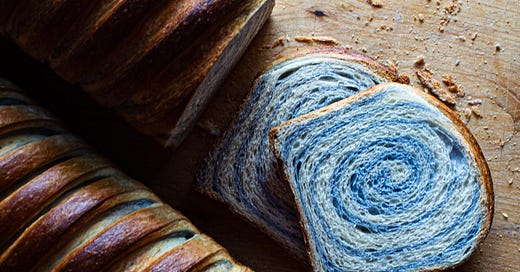


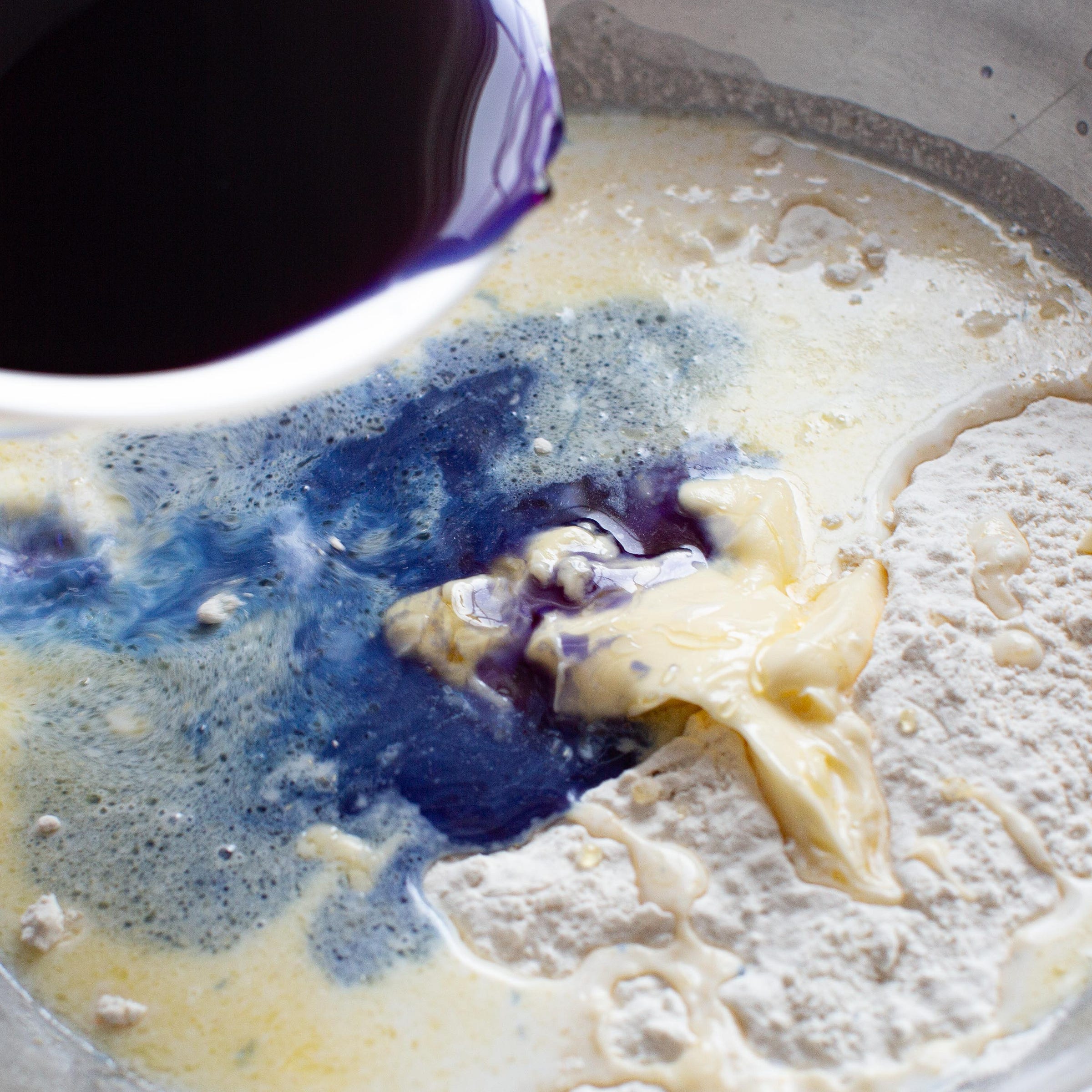
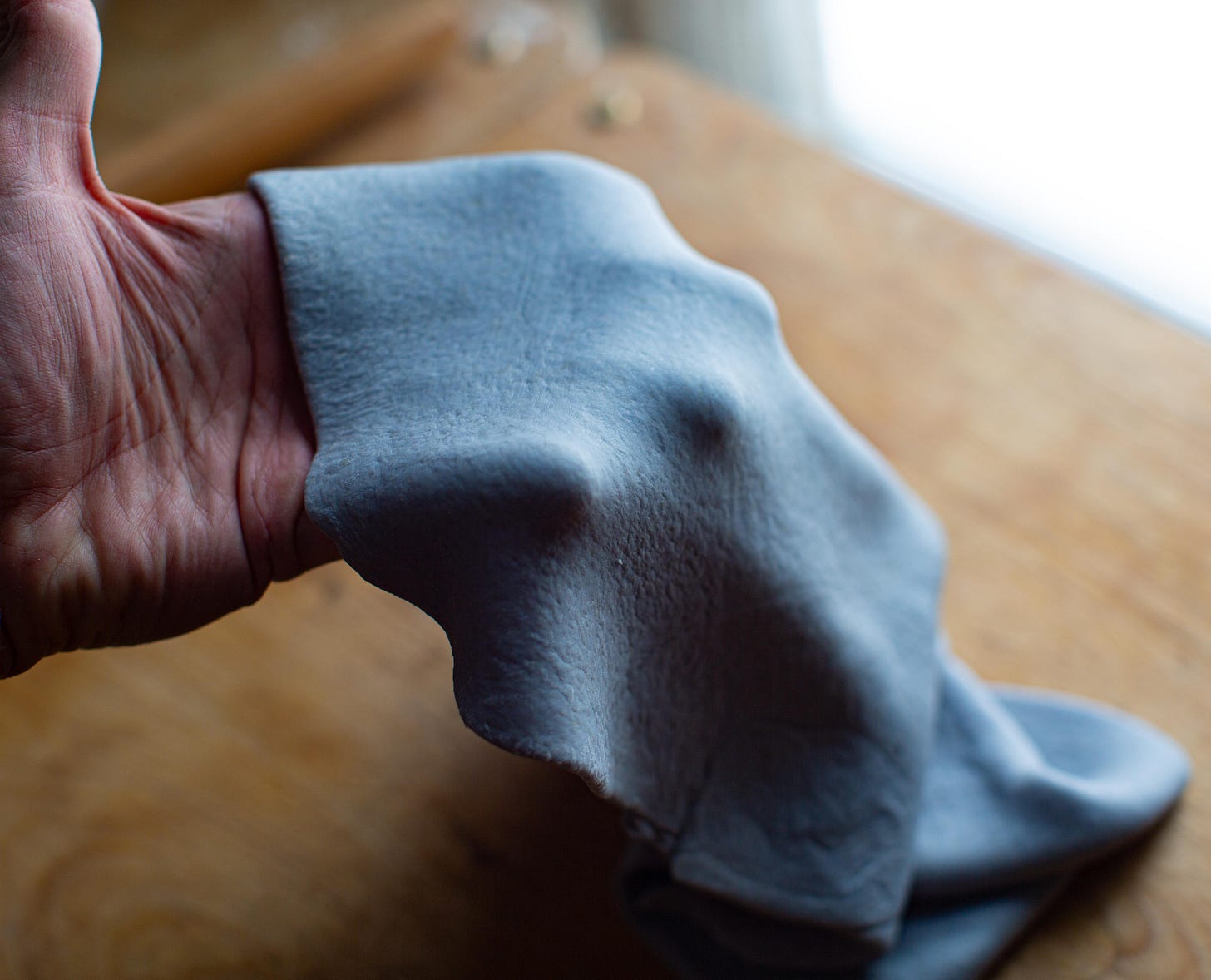
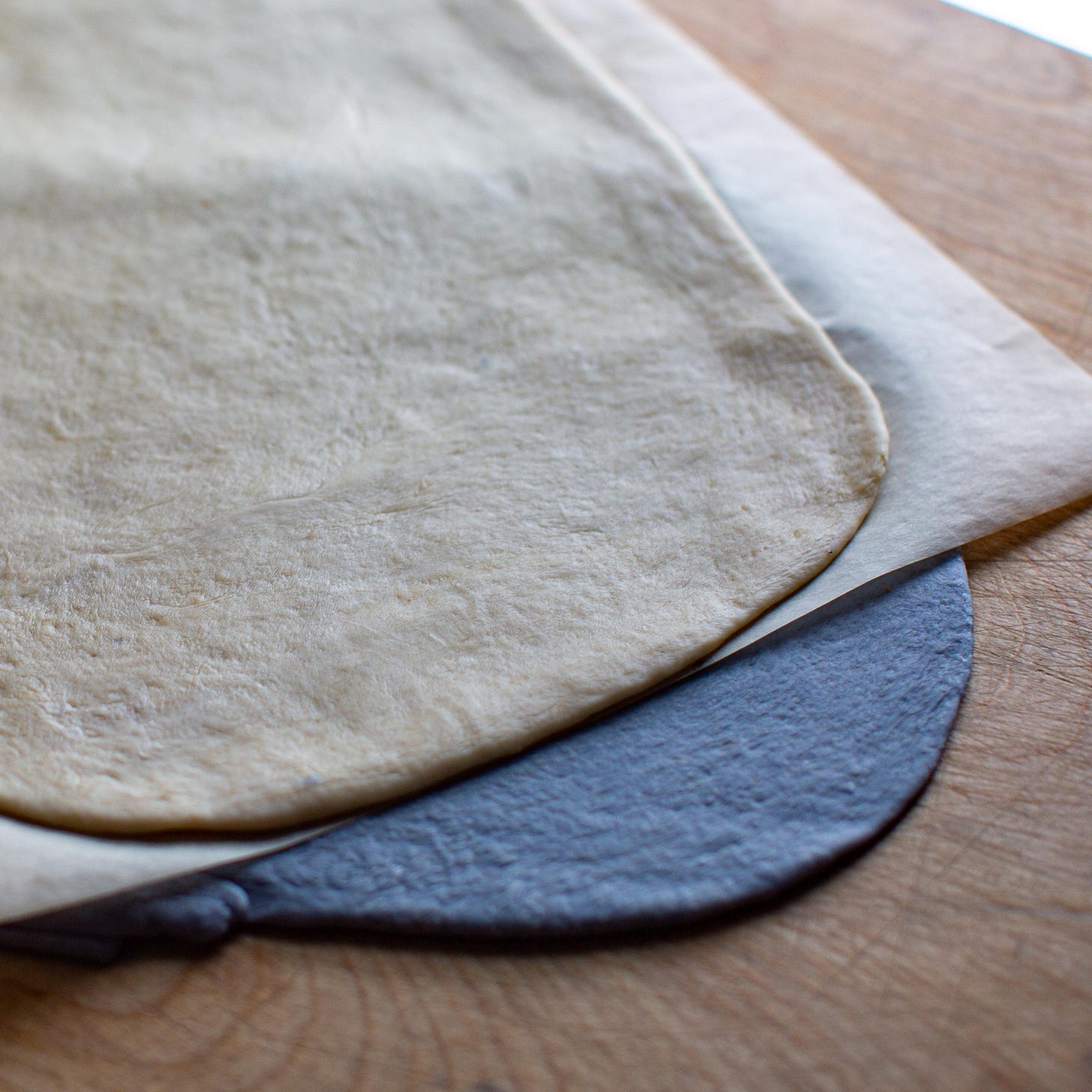
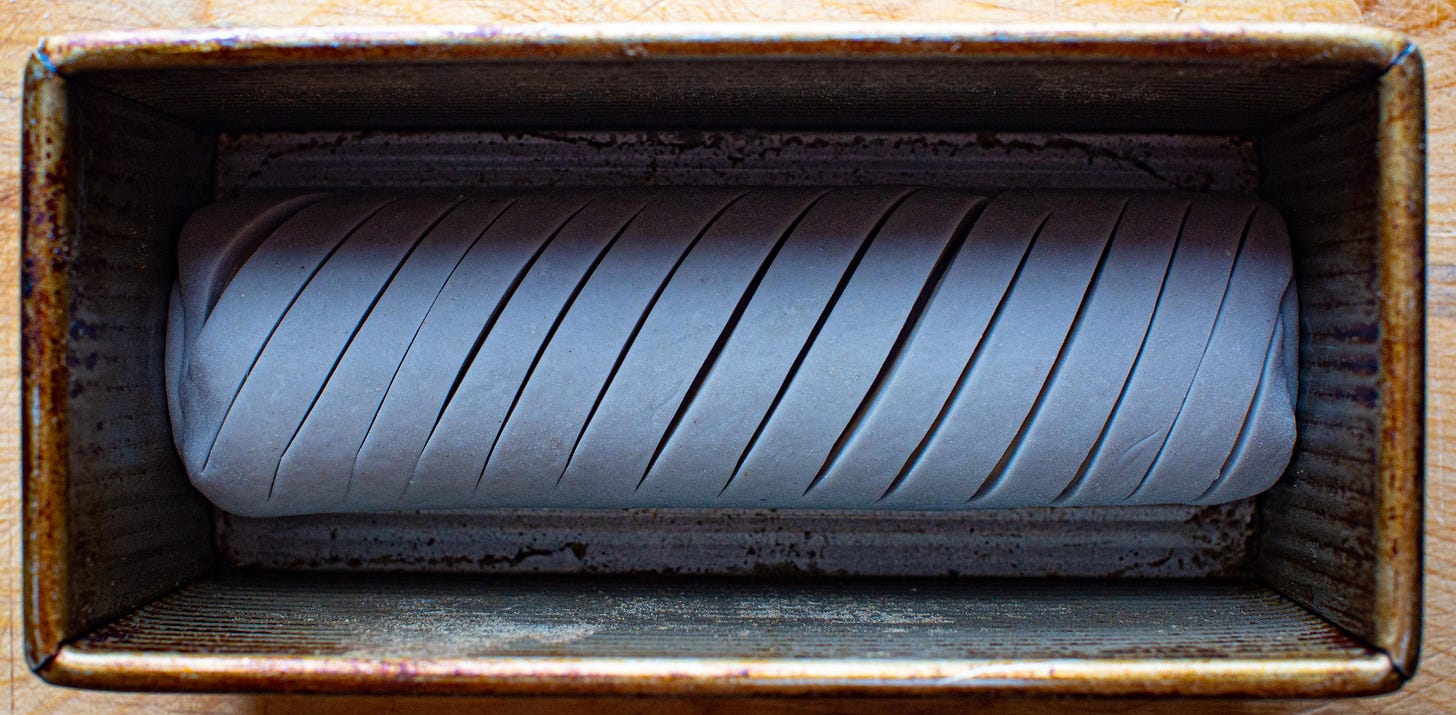

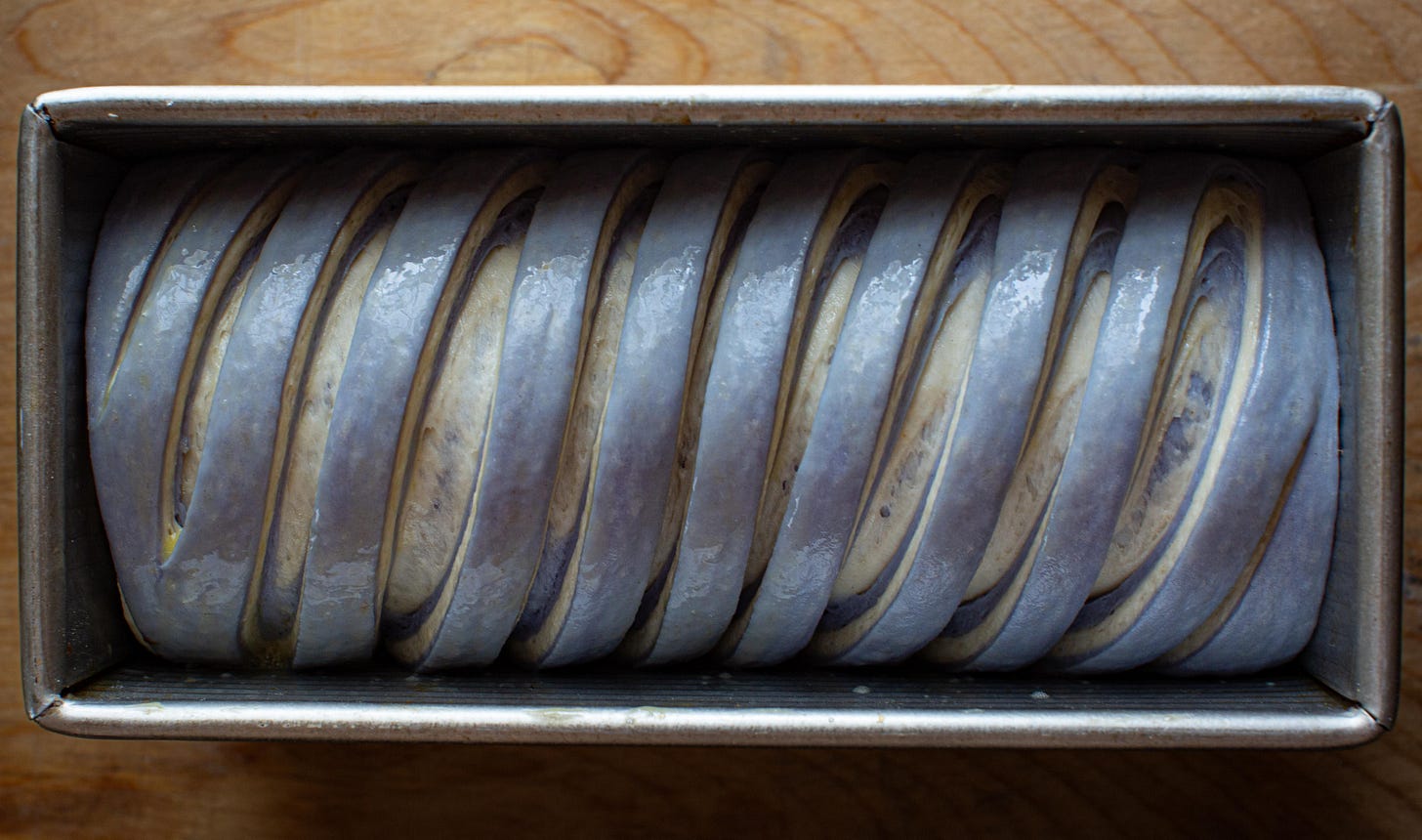

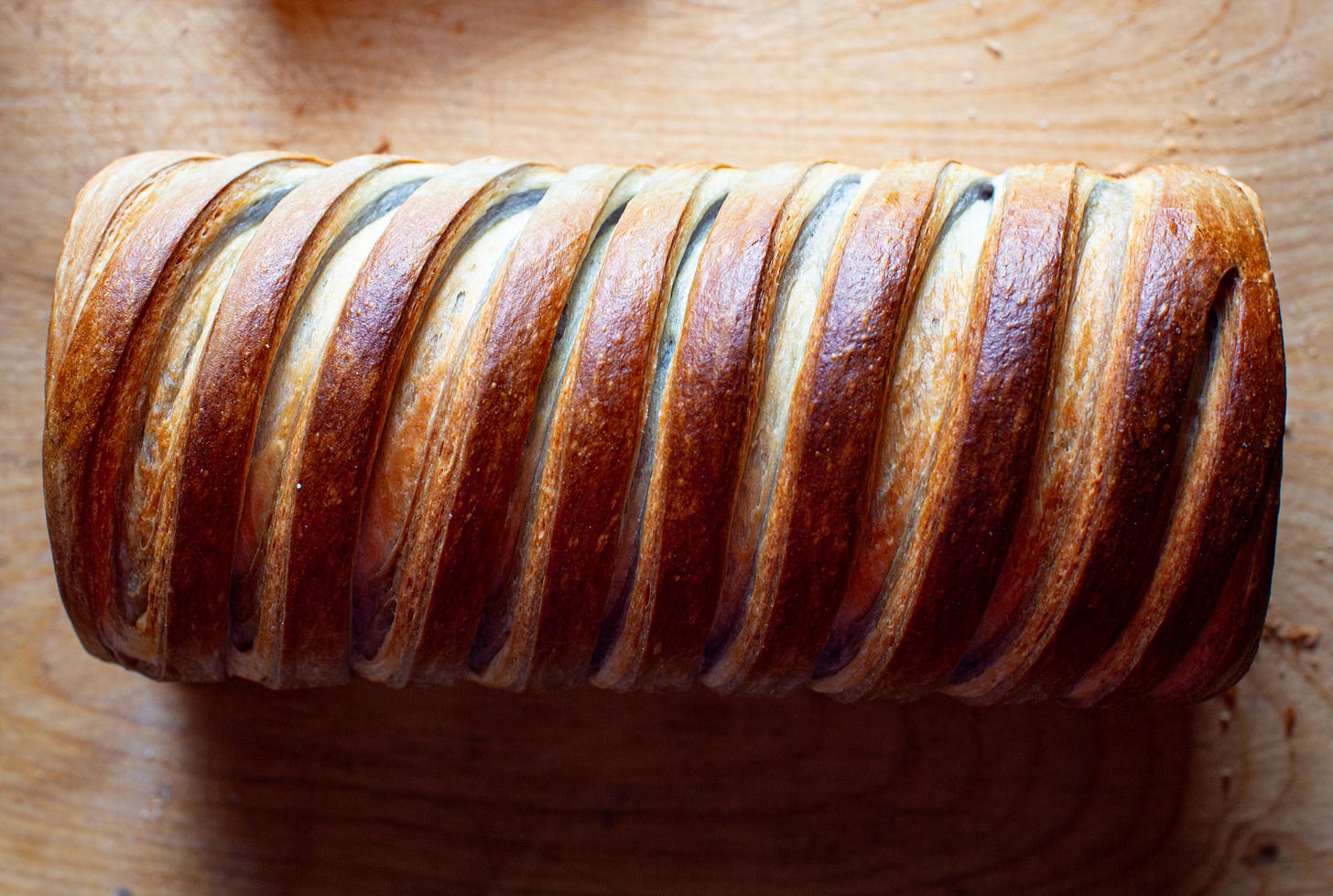
So prettyyyy.... I'm going to have to play around with this!
My question is marginally related - how often should I be changing out the blade on my lame? Every video has a lame cutting like a hot knife through butter and mine has... mixed results. Should I be using a new blade every time? How quickly does dough blunt a razor really?
Looks beautiful! Would love to know the % for a preferment. I have some sourdough culture that desperately needs some use.